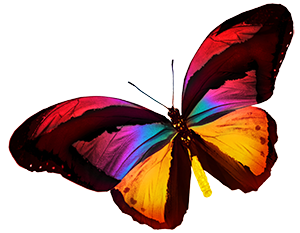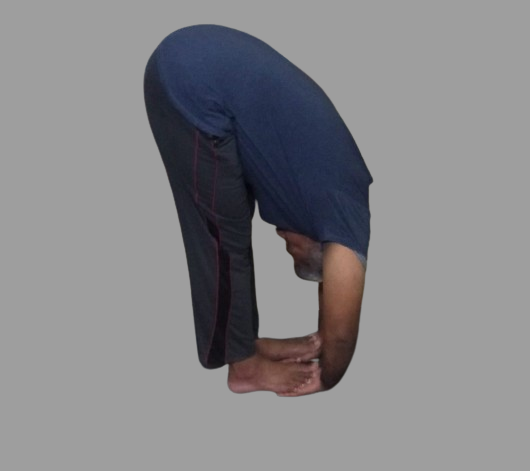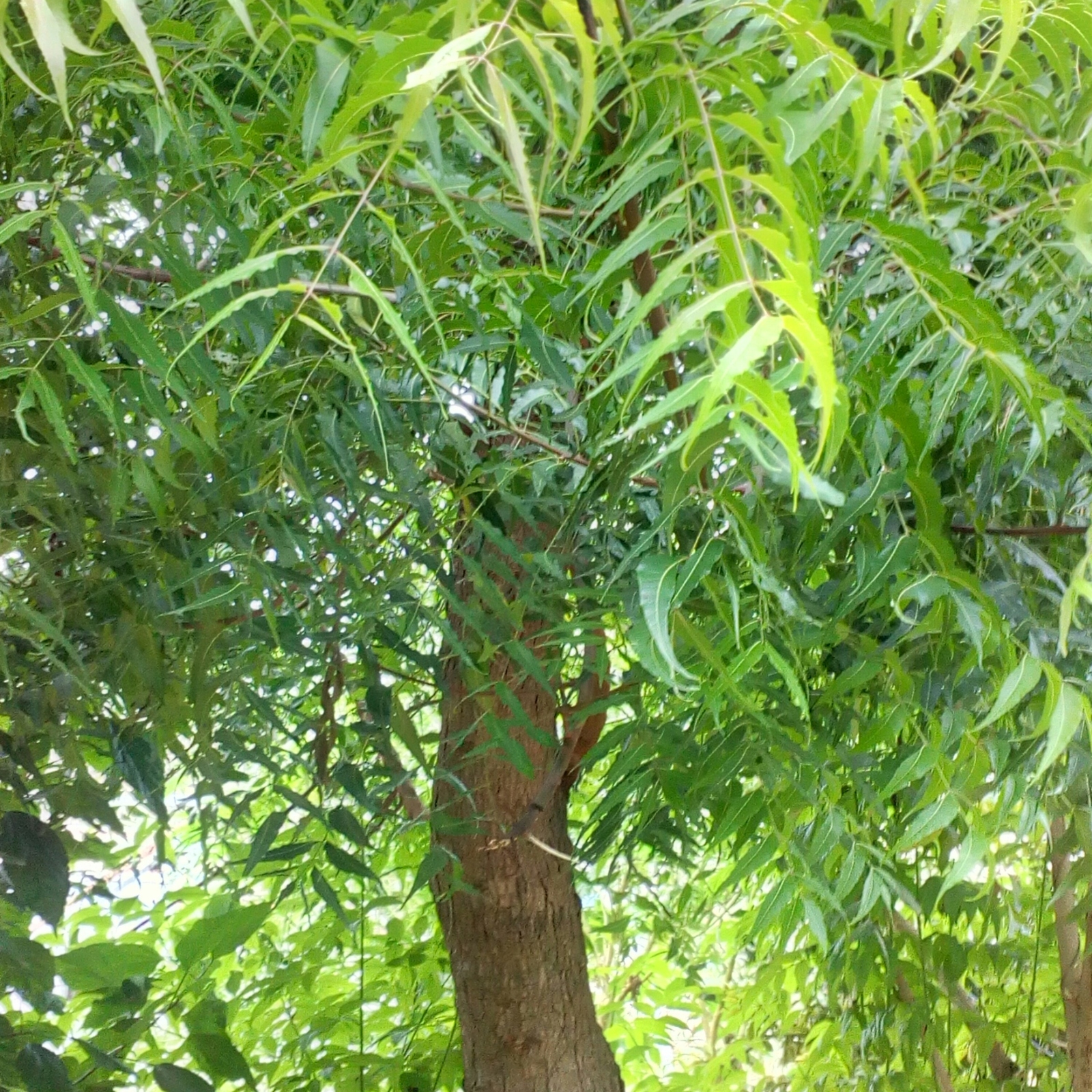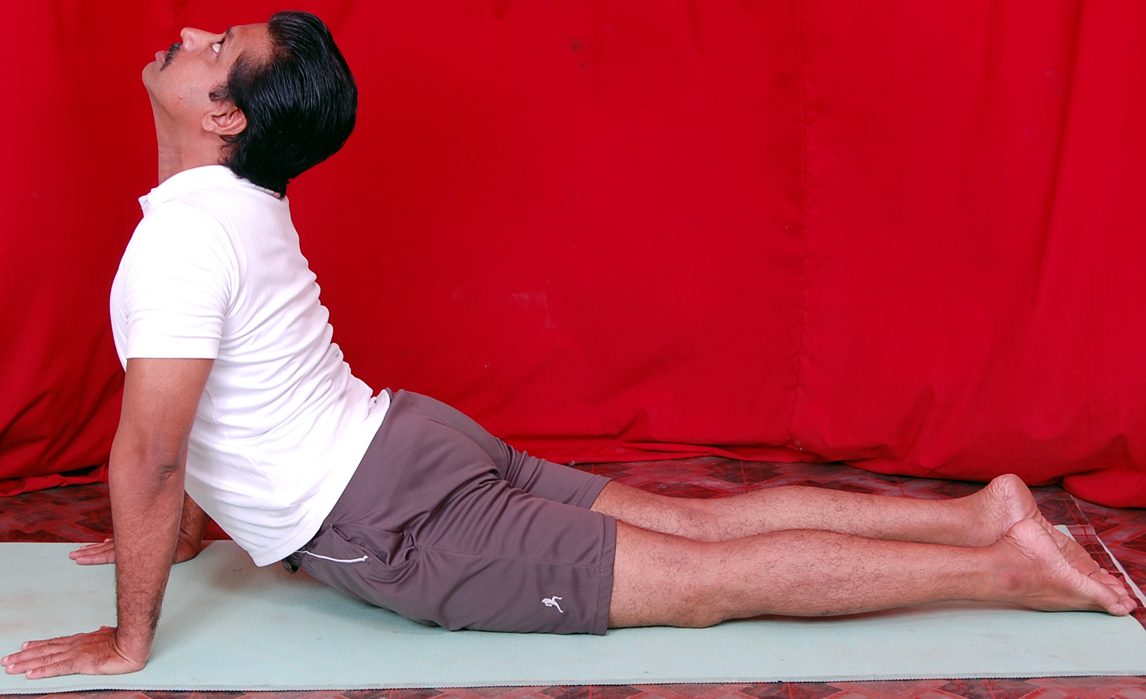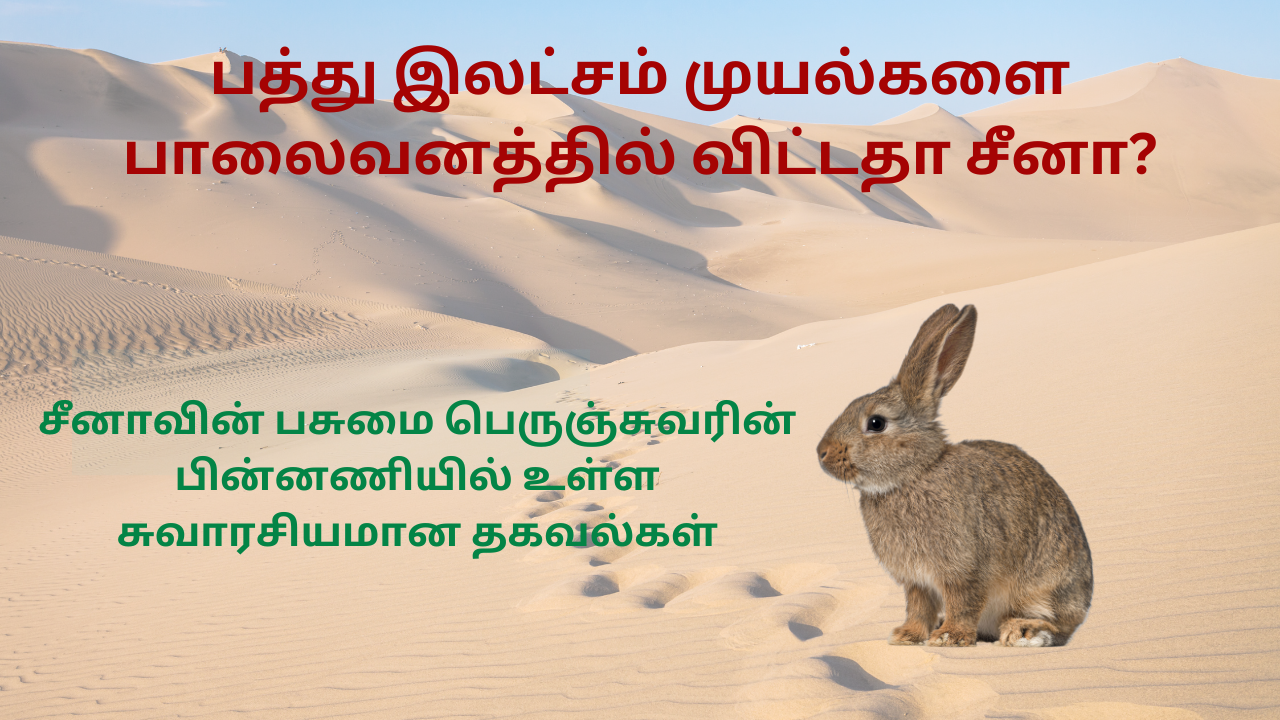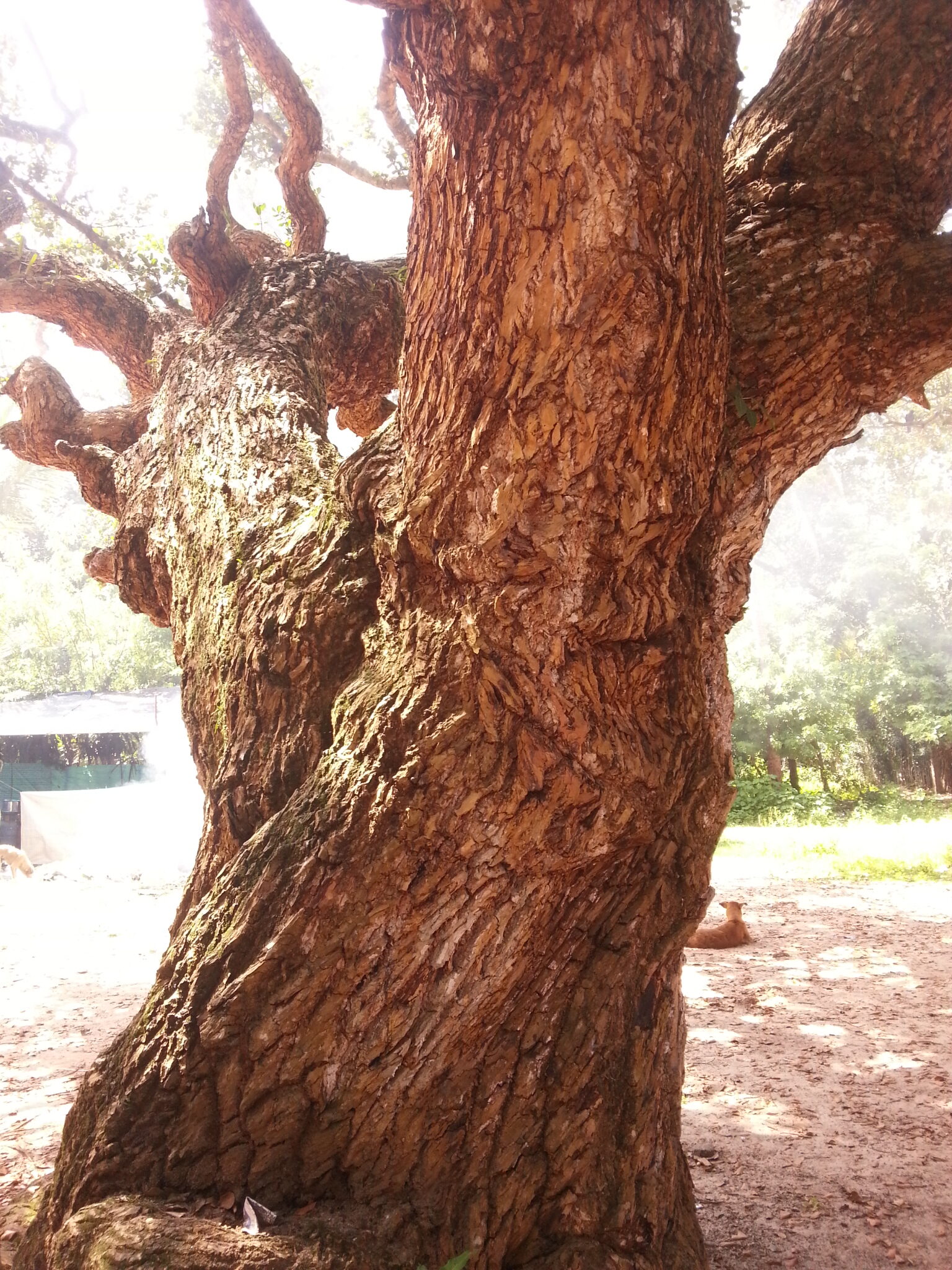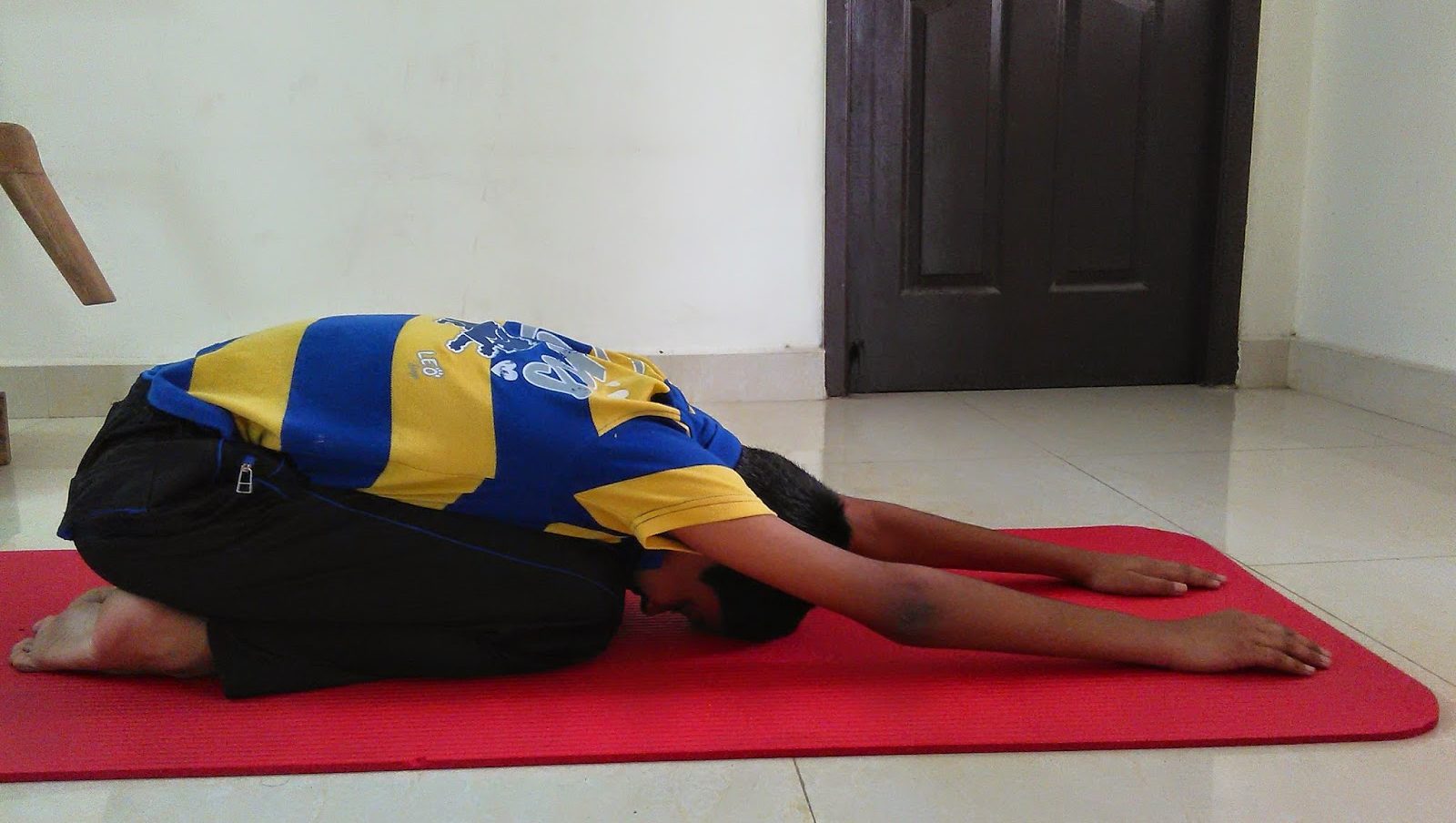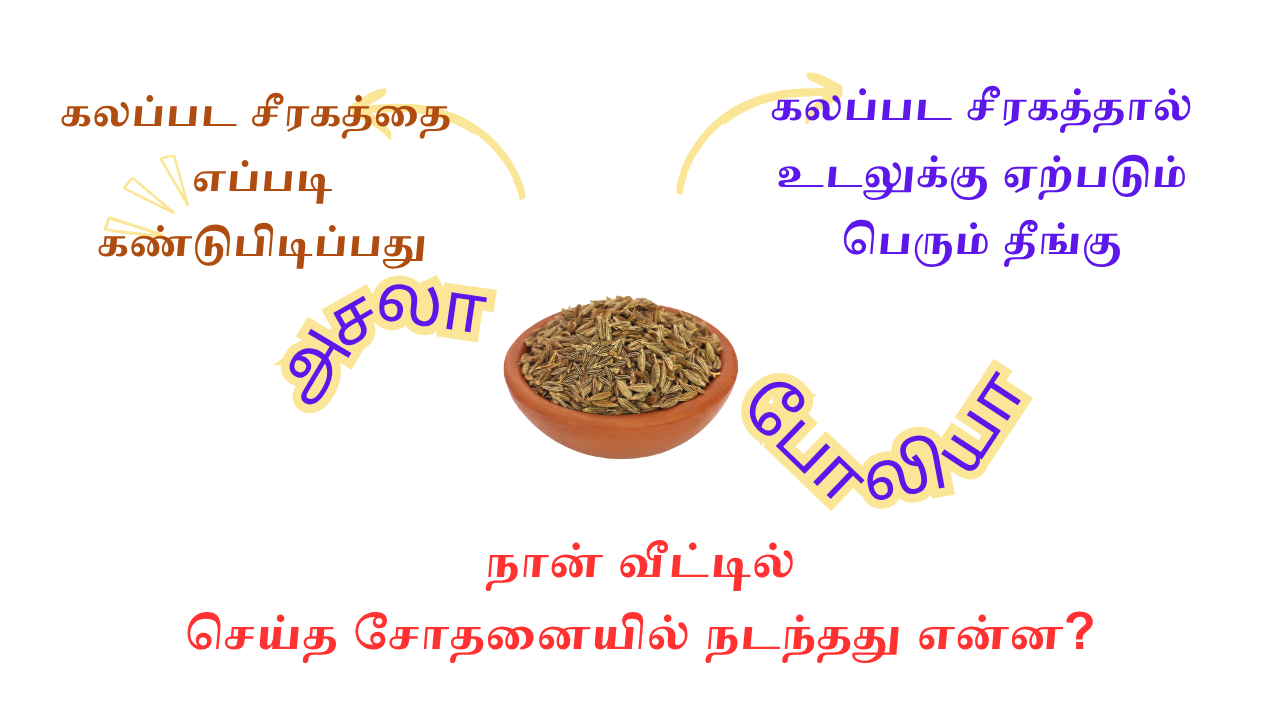The term ‘pada’ in Sanskrit means ‘leg’, ‘asta’ means ‘hand’. Padahastasana means binding of hands and legs. Apart from the general benefits associated with forward bending, Hand Under Foot Pose has some unique benefits. Let us see how the pose is performed to know the detailed meaning of the pose.
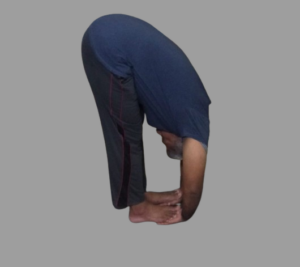 Step-by-Step Guide
Step-by-Step Guide
Let us see how to do Hand Under Foot Pose.
- Stand straight on the mat. Maintain half foot distance between your feet.
- Exhale slowly as you bend forward and stretch your hands downwards.
- Turn the palms upside down and place under the feet. The toes should be closer to your wrists.
- Elbows can be bent sideways or towards the front.
- The legs should be straight.
- Let the head hang downwards.
- Hold the pose for 20 seconds.
In Standing Forward Bend the ankles were held. In Big Toe Pose, big toes were held. In Hand Under Foot Pose both the palms are placed under the feet and hence the palms and feet are combined resulting in palms being pressed by legs. Based on Reflexology science, areas in palms and feet represent internal organs of the body. Hence, when the palms are pressed, the areas representing internal organs are stimulated thereby energizing corresponding organs and enhancing their performance.
The feet also get pressed in the process; in particular, the starting point of kidney channel is located in the feet. Stimulation of the point helps to boost kidney function and relieve the practitioner of symptoms associated with kidney disorders. The areas associated with ears and eyes are also stimulated and hence their functions are enhanced. Since the starting point of kidney channel also aids in supporting ear and eye function benefits to these organs are doubled.
Despite all these poses involve bending forward, the areas where the hands are placed aid in making the benefits unique to the particular pose. Those who find it difficult to perform Hand Under Foot Pose can perform Standing Forward Bend and gradually start functioning of Hand Under Foot Pose.
Other Benefits of Hand Under Foot Pose
- Hand Under Foot Pose stretches the entire body, particularly the hamstrings.
- It improves performance of pineal and adrenal glands.
- The pose boosts blood circulation to the upper part of the body.
- It strengthens spine.
- Practicing the pose helps to relieve stomach disorders including bloating and gastric trouble.
- It strengthens kidneys.
- Hand Under Foot Pose improves eyesight
- It improves hearing.
- The pose relieves stress.
Note
Hand Under Foot Pose is not recommended to those with high blood pressure and heart conditions.
Counter Pose: Arc of the Moon Pose
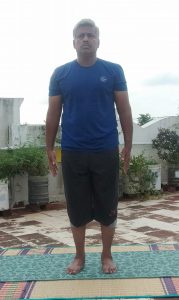
Yoga Pose for Day 6 – Mountain Pose (Tadasana)
A yoga pose gets complete when you perform a counter pose. A forward bend is followed with a backward bend to optimize the benefits to hips. The poses performed so far are forward bends. Now, we will see the counter poses for the first five forward bends.
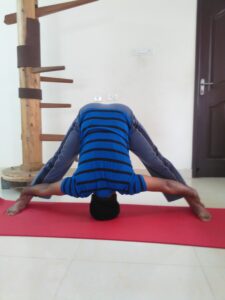
Yoga Pose for Day 5 – Wide-Legged Forward Bend (Prasarita Padottanasana)
Out of the forward bending poses we have seen so far, Wide-Legged Forward Bend is slightly different. Sanskrit terms ‘Prasarita’ means ‘extending outwards’, ‘pada’ means ‘foot’, ‘ut’ means ‘energy’ and ‘tan’ means ‘extending’. Hence, the pose is termed Wide-Legged Forward Bend.
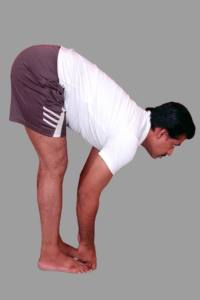
Yoga Pose for Day 3 - Big Toe Pose: Benefits, Steps and Precautions for Beginners
One of the most effective yoga poses for sciatica, Big Toe Pose is highly recommended for strengthening liver and spleen.
